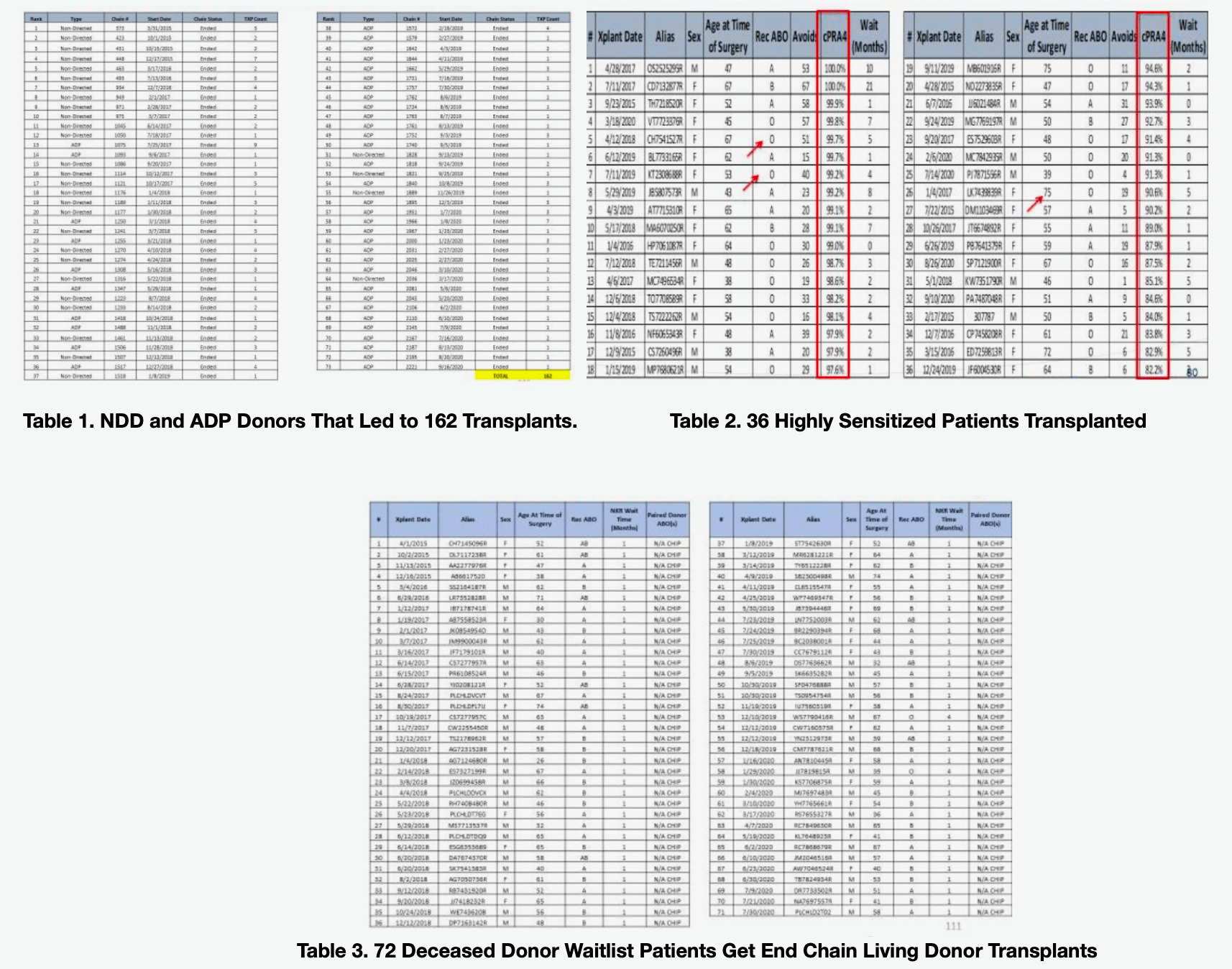The Benefits of Sharing Non-Directed Donors Nationally Through Paired Exchange
1Georgetown University Hospital, Washington, DC, 2Johns Hopkins University School of Medicine, Baltimore, MD, 3UCLA, Los Angeles, CA
Meeting: 2021 American Transplant Congress
Abstract number: 172
Keywords: Donation, Kidney transplantation, Living donor
Topic: Clinical Science » Kidney » Kidney Paired Exchange
Session Information
Session Name: Kidney Desensitization/KPD
Session Type: Rapid Fire Oral Abstract
Date: Sunday, June 6, 2021
Session Time: 6:00pm-7:00pm
 Presentation Time: 6:30pm-6:35pm
Presentation Time: 6:30pm-6:35pm
Location: Virtual
*Purpose: Non-directed donors (NDDs) are a valuable resource that can “unlock” incompatible transplants. Recent advances in paired kidney exchange (PKE) suggest that NDDs may facilitate a greater than expected number of transplants, while receiving additional protections by PKE participation. In 2019, the largest PKE clearinghouse in the US, the National Kidney Registry (NKR), transitioned NDDs to the Family Voucher (FV) program, where living donors (LDs) can name up to 5 family members to receive vouchers for a future kidney should they need one. As a leading center in the NKR, we performed a retrospective review of our NDD/FV donors in an effort to expand the program in the future.
*Methods: Retrospective cohort study of LD transplants at a single center from 1/2015 to 12/2020. Additional data on PKE transplants used NKR data. We assess clinical characteristics of NDDs, including those in the FV program and NKR Advanced Donation Program (ADP) donors who donate in advance of their intended recipient.
*Results: During the study period, our center had 45 NDDs (15 in 2015-2018, 30 in 2018-2020). NDD demographics: 51% male (n=23), 97.8% Caucasian (n=44), mean age 45 years, mean BMI 25.36. NDD blood types: 48.9% O, 40% A. NDDs plus 28 ADP donors enabled 162 resultant transplants (Table 1). This included 36 highly sensitized (PRA > 80%) patients, including 15 who had PRA > 98% (Table 2), and 71 DD waitlist patients that received LD kidneys as end chain recipients (Table 3). For the highly sensitized patients, average wait time for PRA > 80% went from 4.74 years to 3.33 months, and PRA > 98% went from 4.33 years to 6 months. For the past 2 years, NDDs and FV donors represent 25-27% of the NKR donor population; since 2020 virtually all NKR NDDs are in the FV program.
*Conclusions: Our results show that a single center can see a dramatic rise in volume and decrease in wait time from full participation in a national PKE. NDDs were diverse in age and gender, although almost universally Caucasian. Since the FV program benefits future generations, centers should concentrate on exposing potential AA donors to this option. The FV program offers donors a voucher, in addition to other donor protections like travel reimbursement and insurance. Centers throughout the country should be working to educate their patients as to this option. By putting NDDs into a PKE, numerous highly sensitized patients and many on the deceased donor waitlist can receive transplants, and the addition of these donors will lead to much higher transplant rates overall.
To cite this abstract in AMA style:
Verbesey J, Thomas AG, Waterman AD, Vucci J, Vranic G, Gilbert A, Ghasemian S, Cooper M. The Benefits of Sharing Non-Directed Donors Nationally Through Paired Exchange [abstract]. Am J Transplant. 2021; 21 (suppl 3). https://atcmeetingabstracts.com/abstract/the-benefits-of-sharing-non-directed-donors-nationally-through-paired-exchange/. Accessed January 1, 2026.« Back to 2021 American Transplant Congress

